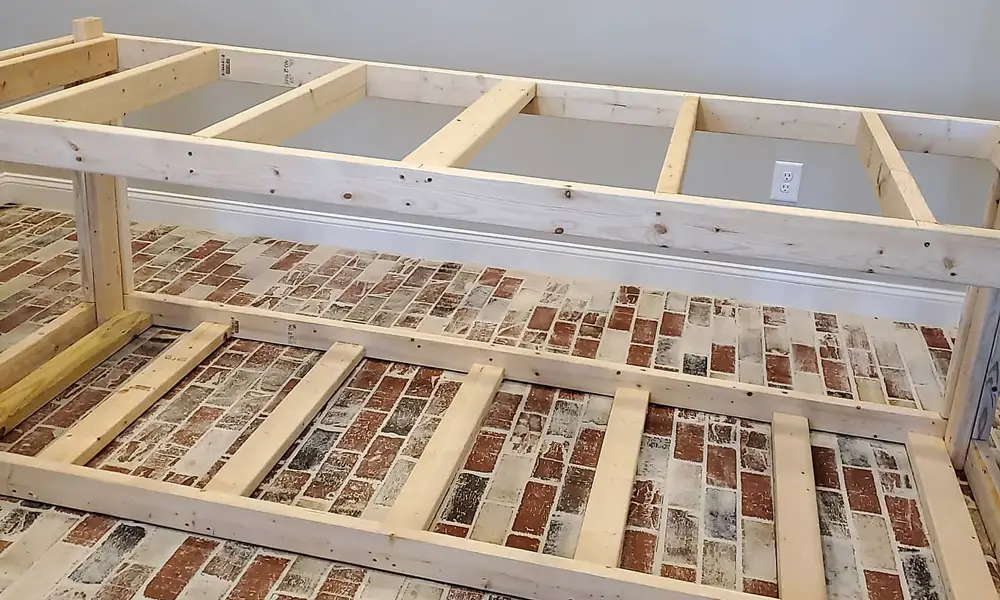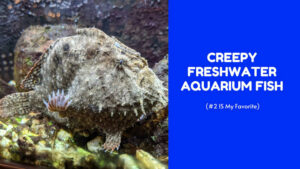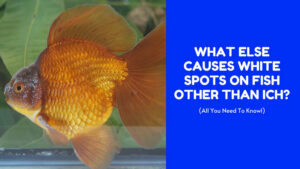Anyone who has ever owned an aquarium knows that it can be quite heavy, especially when filled with water and fish. That’s why it’s important to find a sturdy stand that can support the weight of your tank.
However, there’s more to consider than just the weight capacity. You also want to make sure that the stand complements the look of your aquarium. After all, it’s one of the first things people will see when they enter your home.
A concrete block aquarium stand is a great option for both function and style. It’s strong enough to support even the heaviest tanks, and its neutral color palette will blend in with any décor. Plus, it’s an affordable way to get the perfect stand for your aquarium.
Can You Use Concrete Blocks as An Aquarium Stand?
The short answer is Yes. Modern-day concrete blocks are made from fly ash and slag produced from burning pulverized coal with steel and cement. The blocks are cast into molds and cured until they harden. This makes them extremely durable and ideal for supporting the heavy weight of an aquarium. In addition, concrete blocks are relatively inexpensive and easy to find.
Typically, you might hear most DIYers using cinder blocks as an equally good alternative to concrete blocks. But the fact is, cinder blocks haven’t been manufactured since 1947 after WWII. We’ve been calling them cinder blocks for years, but it turns out that’s not really accurate.
Today’s construction blocks use the by-products from coal instead of cinders. While cinder blocks are no longer made of cinders, the name has stuck around. So, next time you’re at the hardware store and looking for concrete blocks or cinder blocks, you can rest assured that most people in the industry know what you’re talking about.
What are Aquarium Stands Made From?
Aquarium stands are made from a variety of materials, including wood, metal, and typical wood by-products. Each type of material has its own advantages and disadvantages.
When deciding on an aquarium stand, it’s important to consider your budget and the needs of your aquarium.
Let’s look at each material and why it makes a good material to craft your aquarium stand.
Plywood

Plywood is the first choice when it comes to quality aquarium stand building for a number of reasons.
Plywood is a very strong building material, making it ideal for everything from high-end kitchen cabinets to custom-look furniture. It is also less susceptible to water damage than wood by-products, making it the perfect choice for any aquarium enthusiast.
It is available in various veneers, so you can create a look that is entirely your own. And because this material is stainable and paintable, you can change the look of your Plywood furniture anytime you want.
Plywood is truly the versatile, durable material you need for all your aquarium stand building needs.
Metal
A metal aquarium stand is a perfect way to support your large aquariums. Not only do metal stands have great structural support, but they also offer a variety of design options.
Typically made from Iron or steel, metal stands are known for their strength and durability. The stainless steel or aluminum metal frames also provide plenty of space for your aquarium equipment and back-end electronics.
A mix of metal and wood creates a more modern look. It offers the best of both worlds, with the added support of metal and the beauty of wood. If you’re going for the full metal look in your home, the T-slot aluminum framing system is the way to go.
T-slot aluminum is a solid yet lightweight metal that is excellent for creating a sleek, modern aquarium stand in your home. Plus, the T-slot design makes it easy to add or remove components, so you can customize your stand to fit your needs.
- MakerBeam XL Starter Kit consisting of 40 T-slot profile beams with a 15mmx15mm diameter (8x300mm,...
- MakerBeam XL enables professional prototyping and provides mechanics for any electronics project.
- All MakerBeam XL elements can be easily combined and reused (no welding required) enabling shorter design...
- There are no fixed positions for mounting giving you the freedom to build your own design easily
- MakerBeam XL has a low weight structure and high loading capacity.
However, the T-Slot aluminum can be quite expensive. For those on a tight budget, it may be worth considering other options.
It is worthy of note that metal is not a good choice for a saltwater tank as it will rust over time.
Typical Wood By-products
Wooden stands are usually used for larger fish tanks. They come in a wide range of designs, shapes, and sizes. But are wood by-product stands good?
I know what you’re thinking, “Isn’t wood by-product basically just sawdust?” Well, yes and no. Yes, it’s made from sawdust, but no, it’s not just sawdust.
The two well-known wood by-products are inexpensive MDF (medium-density fibreboard) and uniform and stable particle-boards. They are usually a combination of small boards, slabs, and sawdust, with some pieces. As its name implies, it is usually a by-product of sawmills, furniture manufacturers, and other wood processing companies.
The idea of using wood by-products for aquarium stands might sound appealing, especially to those who are on a budget and cannot afford to purchase a more expensive piece of natural wood. But the truth is that it’s not as good as natural wood, and it could also pose a risk to your tank and your fish.
They are very popular and moderately priced. Most the wooden stands have a large shelf or resting platform at the bottom, which not only provides fish with a place to hide and rest, but it also improves the overall design of the entire stand.
What Should You Consider When Selecting Concrete Blocks as an Aquarium Stand?
Now, we know the materials for your aquarium stand. But what other factors should you look for when selecting concrete blocks as an aquarium stand? Here are some key features to keep in mind.
Aquarium Size and Weight
Concrete blocks might not be the first thing that comes to mind when you think of aquarium stands, but they can actually be a great option for small to medium-sized tanks.
However, they’re not the strongest material. If your tank is over 125 gallons, the weight of the water might cause the concrete blocks to collapse.
As a result, it’s generally advisable to choose another material for stands intended for tanks 125 gallons or larger.
Where You Place Your Aquarium
The spot of your aquarium is another important factor to consider when building a DIY concrete blocks aquarium stand. The blocks can be quite heavy, so you’ll need to make sure that your floor is able to support the weight of the stand, especially if you are not on the ground floor.
If you’re really concerned, you can always reinforce the floor with some additional support or consult a contractor beforehand.
Concrete blocks are also a good choice if you have a saltwater aquarium. The reason is that they’re less likely to corrode over time, which is important for saltwater tanks.
Storage

Aquarium stands are a vital part of a well-balanced aquarium setup. Not only do they hold the aquarium up and keep it from falling over, but they also provide storage space for your aquarium needs.
You can easily put a sheet of plywood as a shelf when building your concrete blocks aquarium stand. Of course, the specialized aquarium stand on the market has more storage space for you to put other stuff. But the more important thing is that it will save you money a lot.
Budget
As any experienced fish keeper knows, budgeting for an aquarium can be a bit of a challenge. Fish tanks are not cheap, and the costs of fish food, filter cartridges, and other supplies can quickly add up.
When it comes to stands, concrete blocks are a great option if you’re on a budget. They’re relatively cheap and easy to find, and they can be used for a variety of different tanks.
So if you’re looking to save a few dollars, don’t be afraid to get creative with your stand material. Concrete blocks may just be the perfect budget-friendly option for you.
Flexibility
Another big pain of DIY concrete blocks is that they are not flexible. So, if you want to move the aquarium to another place, the whole stand will be moved as well. This is not a big problem if you have a smaller tank. But for the larger one, it will take you much more time and effort to do that.
So these are some factors you should keep in mind when selecting concrete blocks as an aquarium stand. Although they’re not the best option for large tanks, they can be a great choice for smaller ones. Just make sure to consider the weight of your tank and the durability of the stand before making your final decision.
Final Thoughts
Concrete blocks can be used to build an aquarium stand, but it is not the best choice. Compared with other materials, the biggest downside of building an aquarium stand with concrete blocks is that they are brittle and unstable for a large aquarium. If one block should crack, the aquarium stand will be in danger of collapse.
Additionally, the concrete blocks are not very easy to clean, and they can harbor bacteria. If you use concrete blocks to build an aquarium stand, it’s best to have time to paint your blocks first.
I hope you enjoyed reading this blog post. If you have any questions or comments, please feel free to leave them below.






